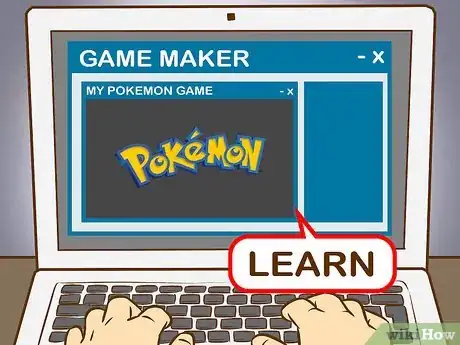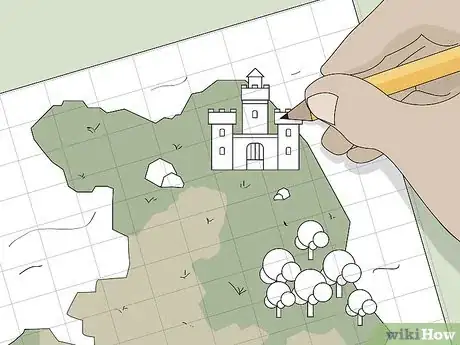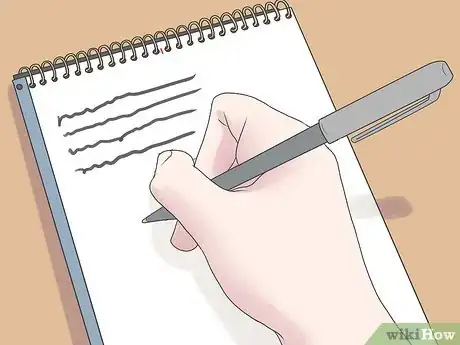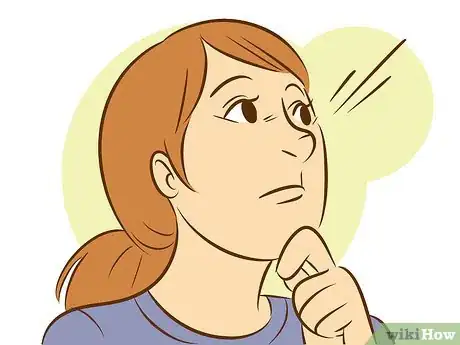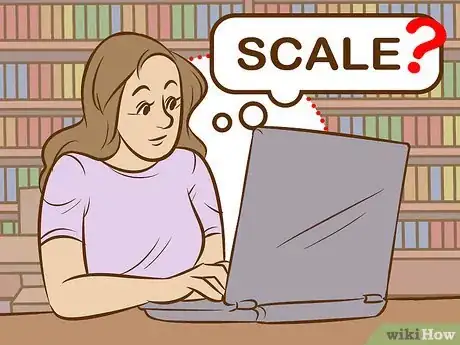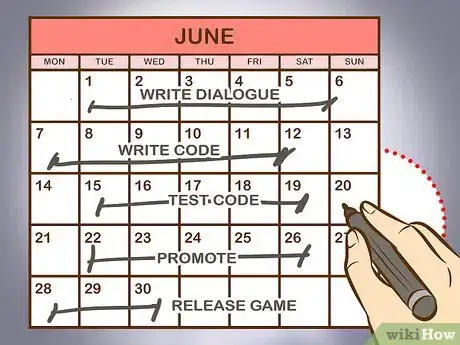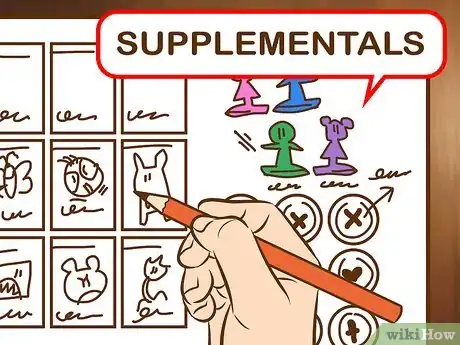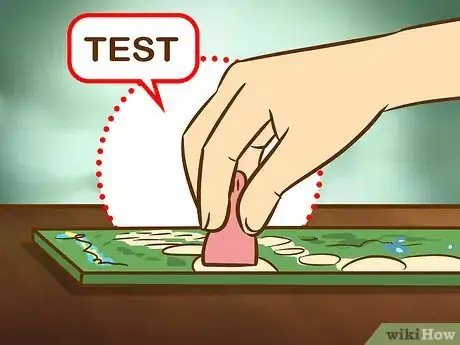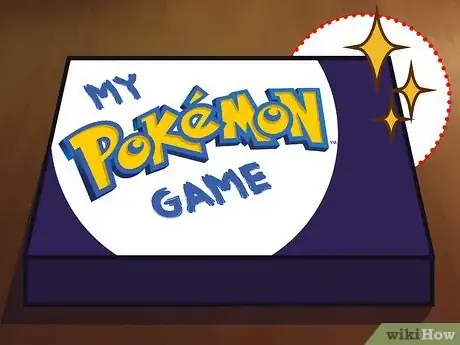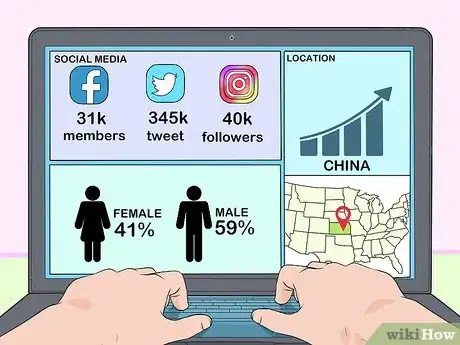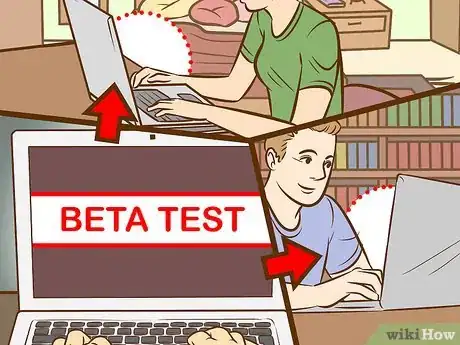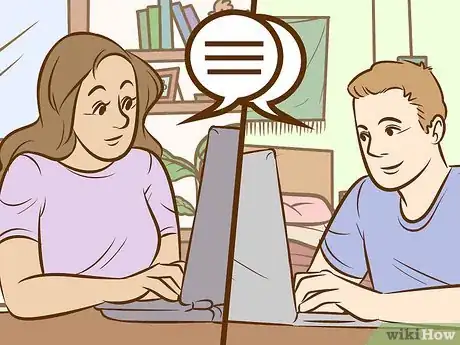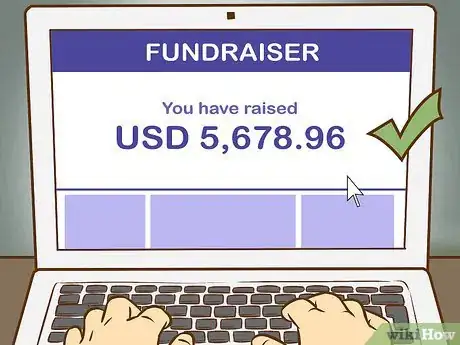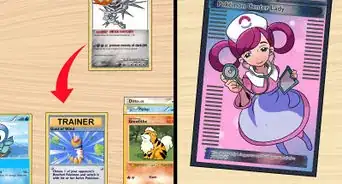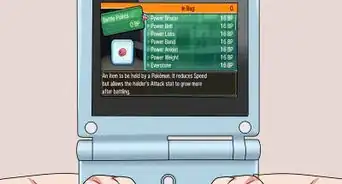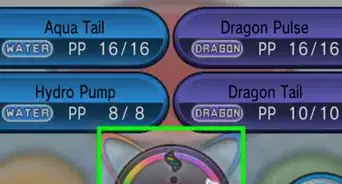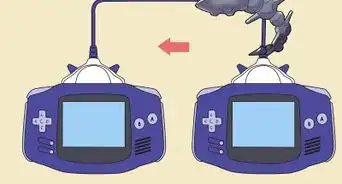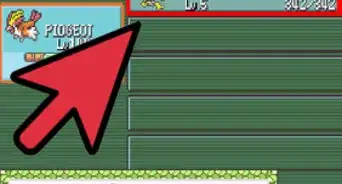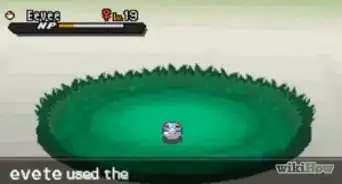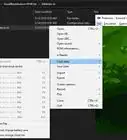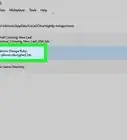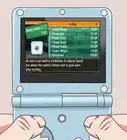This article was co-authored by Madeleine Flamiano. Madeleine Flamiano is a Role-playing Game Enthusiast based in Berkeley, California. She has over 20 years of gaming experience and is an avid gamer in all parts of her life—she's especially fond of tabletop board games and the world of Pokémon. Pokémon Crystal Version is her favorite game in the franchise. Some of her greatest feats were evolving Eevee to a Level 99 Umbreon and collecting every legendary bird Pokémon. Her professional path started at NaNoWriMo, where she scripted a summer-long world-building series and hosted its Virtual Write-Ins. She has written seven books for DDCO Publishing, which specializes in LitRPG and is operated by New York Times Bestseller JA Cipriano. She has ranked in the Top 100 list for Dark Fantasy, Sword & Sorcery, and Fantasy Romance. She was voted by her peers as "The Perfectionist" on Roleplay Adventures, a SERP for forum roleplaying. Madeleine graduated from Mills College with a B.A. in English with a concentration in Literature and a Minor in Philosophy.
There are 12 references cited in this article, which can be found at the bottom of the page.
This article has been viewed 374,891 times.
You may have noticed that the Pokémon card and video games you play are sometimes different from the Pokémon shows or movies you watch. To make Pokémon games balanced, developers often have to leave out some features and adjust others. For the most accurate Pokémon game, or one that better matches your idea of the Pokémon universe, you might be best off making your own game.
Steps
Brainstorming
-
1Consider a Pokémon RPG. Many fans have made their own Pokémon role-playing games for the computer. One of the easiest ways to get started is to buy RPG Maker XP, then download Pokémon Essentials, a free, fan-made creation that mimics a real Pokémon RPG. To find out more, read about RPG Maker XP and check out the tutorials on the Pokémon Essentials wiki.[1] [2]
-
2Think about a card game. All you need to start your own Pokémon card game is paper and pens. Even if you're not willing to draw the cards, you can print out artwork from fan sites and other free online resources.
- Search for online templates that look similar to the original Pokémon card game's base design. This way, when you print up your own cards, you can print your cards on the base design to make your card game look more official.[3]
Advertisement -
3Learn about tabletop role-playing games. A game styled off of Dungeons and Dragons will be more flexible than digital, tabletop, and card games. These games are based on storytelling, characters, and imagination.[4] [5] You can come up with elaborate rules systems if you like, or use an existing system to tell your own Pokémon story.
-
4Brainstorm ideas. Have you always wanted to invent your own Pokémon? What about playing as your favorite Pokémon instead of a trainer? Write down a few ideas that make your game unique.
- Think about how you would use your ideas in an RPG, card game, or whichever format you chose. If it doesn't seem like a perfect match, maybe you could make a board game or video game.
-
5Account for age. You'll have to think about the people who will play your game if you're going to design the best game possible for those kinds of people. Younger players might require very simple instructions with examples and pictures, older player might like rules and game play a little more complex. Some age ranges to consider include:
- Ages 6+
- Ages 6 - 12
- Ages 10+
- Ages 10 - 12
- Ages 16+, and so on...
-
6Plan the scale of your game. A large, involved project might require more effort than you'll be able to muster on your own. You may need to recruit friends or help from online fan communities to help with trickier parts of your Pokémon game-making project. Smaller projects, like those that investigate certain aspects of the game, can be more reasonable for you to accomplish on your own. Some examples of smaller scale game projects might include ones that develop the story of a side-character or explore a region in the Pokémon universe more fully.
- Become involved in online fan communities before begin working on your game. Make friends online so you can ask them for help with your game when you need it. Some examples of fansites you might look into include: the ultimate Pokémon network at www.upnetwork.net, Pokedream at www.pokedream.com, and Bulbagarden at www.bulbagarden.net.[6]
- Recruit from among your friends at school who are also interested in Pokémon. You might even have a game, anime, or Pokémon club that you can join to make like-minded friends. If no such club exists, you might want to look into how to start a school club.
- Take a pencil and paper and write down the particulars of your game. In particular, you should decide how long your game will be, the characters involved, the Pokémon available, and the physical size of the game. Before starting, you should decide how many squares your board game will be, you should know how many cards you'll need to make for your card game, and you'll also need to know the dimensions for the maps in your digital games.[7]
-
7Think up the rules for your game. You'll need detailed and easy to understand rules for your game so that other players can understand penalties, rewards, and how to play your game. You should write down a list of rules and get the opinions of others to find out whether they are clear or not.
- Keep ties in mind. While playing your game, two players may draw, or a player and a non-player character may draw. In this case, you should have clear instructions what players should do.
- When you have finished writing your rules, go through each and make sure none of the rules contradict each other. Rules that disagree with each other may leave players confused as to what to do next.
- You might want to write your rules in the Pokémon style to add realism to your game. For example, instead of writing a rule, "Players should draw a card at the beginning of each turn," you could instead write, "Trainers should power up their Pokemon by drawing cards at the beginning of each round."
- You should also include the conditions necessary for player to win with the rules of your game. These conditions can range from simple to complex, depending on the age range and difficulty of your game.[8]
Making Your Pokemon Game
-
1Plan a development schedule. When you don't have goals or deadlines, you can sometimes lose focus and spend too much time tweaking unnecessary features. To prevent yourself from lollygagging and not finishing your Pokémon game, you might want to come up with a development schedule.[9] Identify the main tasks of your project, predict how long each task will take, write down the order you plan on working on and completing tasks, and then get to work!
- An example development schedule might look something like:
Jan. 1 - 5: Write dialogue for characters
Jan. 6 - 20: Write code for maps one and two
Jan. 21 - 31: Write code for character dialogue
Feb. 1 - 10: Test code
Feb. 11 - 20: Promote on social media
Feb. 21: Release game
- An example development schedule might look something like:
-
2Create a model game board. This model will serve as the rough draft for your game. Depending on your approach to planning, your model might be a simple 2-dimensional sketch of your game setting/board on a piece of paper, but you might benefit from making a more detailed 3-dimensional model. You could even use both of these approaches, starting with a 2D sketch and then further developing that into a 3D model.
- You'll need to know how you plan on placing the squares of your board game, if you plan on making one. You can even plan on future artwork or setting drawing you plan on using in the future, simply make a notation or draw a simple sketch.
- Your card game may or may not use a placement board where players lay cards onto specific spaces for certain purposes. But if your game does, you should create a model of one of these placement boards. The physical model will help you test your game.[10]
- Draw maps. Tabletop RPGs sometimes make use of pre-made maps for dungeons or other scenarios, like battles. Digital RPGs also use maps that small digital character models (called sprites) travel across. You should draw all maps necessary for your game.
-
3Develop your game's supplemental materials. This includes creating things like game pieces, playing cards, character dialogue, code, tokens, and various other things depending on the kind of game you decide on making. This is often the longest part of the game making process and will require hard work and dedication for you to complete.
- You may have to revise your deadline schedule at some point during the development of your game's materials. This is not always a bad thing, as some parts of the game making process will likely be easier than you expect.
- For physical games, you might check out how to make molds. This way, when it's time to make a character model for the game pieces on your board, you can create a realistic mold for pieces.
-
4Test your game. Once you've made the game board and completed making the supplemental odds and ends, you'll need to test your game. You should think about how you can best run a focus group. You want to get the honest feedback of potential players so you can improve things like game play, appearance, dialogue, and fun-factor.
- You may notice during the course of testing that some of your supplemental materials, some tokens and models for example, are too small for players to use easily. You may want to note this fact down, as well as a note to increase the size of those objects.
- If you have difficulty taking feedback, you can always use an impartial third party to run your game testing. This way, you won't influence the test group with your opinions or accidentally add supplemental information players wouldn't normally have.
-
5Make a finished product. This might involve getting the help of a professional artist, recruiting volunteers from fan communities to help make the game, or, for large scale projects, producing your game at a factory. Or you may only want to make a single game for you to play with your friends. Whatever the case, your finished product should be the best version of your game. Proofread your game text, check illustrations - double check everything.
- To save money, you might use volunteers to finish the models and professionals to put together the final product. This way you get a professional finished product without having to pay for a professional for the entire project.
-
6Advertise your game on social media if you desire. Fans that helped you make your game might want to take part in enjoying the finished product. In this case, you might post a link to the game on the homepage of the fansite you used to find your helpers. Or you might just be proud of your hard work, in which case you could announce your game's debut on social media, like Twitter and Facebook.
- For fans on a budget you might look into ways you can advertise for free. There are also techniques you might employ to advertise for free with local venues on the Internet.[11]
Polishing Your Pokemon Game
-
1Do a beta test. Adding a second phase to the testing of your game will often reward you with an even better finished product. For example, at first you might use a small, select group to improve your game. Once that group has contributed all they have to offer, you can move on to the second round of tests, often called beta tests, and see what new players think about the game. Make changes according to the suggestions of the players until your game is ready to release.[12]
- More complicated games might require more rounds of testing. You should test your game as many times as is necessary until you feel comfortable with the condition and clarity of the game.
-
2Inquire with previous fan developers. Fan communities are often tight knit, and through these you can sometimes inquire with users who have experience making games. You can ask specific questions, or you might be more general in your approach. Remember to be respectful when asking another fan to invest time answering your questions or consulting on your game project.
-
3Consider 3D printing to make your game. Though a relatively new and rare service, 3D printing is slowly becoming more widely available.[13] With a 3D printer, you can use a computer to generate a 3D model of your game, game pieces, and other game materials. For more information on 3D printing, you should read up on how to print a 3D object.
- 3D printers are still relatively expensive, making them fairly rare. You might find a 3D printer you can use to make your game at your local university, a design firm, or a model building company.
-
4Raise money for your game. With enough time and effort on your part, eventually you'll likely make a game that you'll be proud to admit is your own creation. However, by crowdfunding your game, you can increase the money you have to invest in your game. Depending on your fundraising efforts, this may mean you can afford hiring professional development of your game.[14]
Community Q&A
-
QuestionHow do I actually create a Pokemon game on my PC?
 Community AnswerTo create the actual game, you need to learn general programming skills. You need to learn a particular programming language and then apply what you've learned to build your game. Some programming languages you could look are Python, PHP, Ruby, or JavaScript.
Community AnswerTo create the actual game, you need to learn general programming skills. You need to learn a particular programming language and then apply what you've learned to build your game. Some programming languages you could look are Python, PHP, Ruby, or JavaScript. -
QuestionWhat devices can play my Pokemon game?
 Andriy KuzmenkoCommunity AnswerThat depends on how you decide to develop your game. PC, Mobile/Tablet, Playstation, Xbox, Nintendo DS, Wii and Gameboy are just few examples from the amount of possibilities you have.
Andriy KuzmenkoCommunity AnswerThat depends on how you decide to develop your game. PC, Mobile/Tablet, Playstation, Xbox, Nintendo DS, Wii and Gameboy are just few examples from the amount of possibilities you have. -
QuestionCan I make a game on a laptop?
 Community AnswerYes, you can. I would recommend using RPG Maker XP, but it does cost money, so be prepared to pay about $20-$30.
Community AnswerYes, you can. I would recommend using RPG Maker XP, but it does cost money, so be prepared to pay about $20-$30.
Warnings
- While it doesn't happen often, it's not out of the realm of possibility that you may be asked by Nintendo or Game Freak to stop development on your game, should it get enough attention for them to notice it. This happened to Pokémon Prism, a popular Pokémon fan game that was in development for 8 years.[15]⧼thumbs_response⧽
Things You'll Need
- 3D Printer (optional)
- Cardboard (optional)
- Computer (optional)
- Mold making materials (optional)
- Paper
- Pencils
- Regular printer (optional)
References
- ↑ http://pokemonessentials.wikia.com/wiki/Pok%C3%A9mon_Essentials_Wiki
- ↑ https://oripoke.wordpress.com/2015/08/13/so-you-want-to-make-a-pokemon-game/
- ↑ http://www.donnayoung.org/homeschooling/games/game-boards.htm
- ↑ http://dnd.wizards.com/dungeons-and-dragons/what-is-dd
- ↑ https://www.techopedia.com/definition/27052/role-playing-game-rpg
- ↑ https://bulbapedia.bulbagarden.net/wiki/Category:Fan_sites
- ↑ https://oripoke.wordpress.com/2015/08/13/so-you-want-to-make-a-pokemon-game/
- ↑ http://brightestbulb.net/games/writing_rules/
- ↑ http://www.referenceforbusiness.com/encyclopedia/For-Gol/Goal-Setting.html
- ↑ http://www.popularmechanics.com/culture/gaming/a11376/stop-reading-this-and-go-build-your-own-board-game-17314604/
- ↑ https://oripoke.wordpress.com/2015/08/13/so-you-want-to-make-a-pokemon-game/
- ↑ http://www.webopedia.com/TERM/B/beta_test.html
- ↑ http://www.techrepublic.com/article/3d-printing-10-factors-still-holding-it-back/
- ↑ http://www.popularmechanics.com/culture/gaming/a11376/stop-reading-this-and-go-build-your-own-board-game-17314604/
- ↑ http://arstechnica.com/gaming/2016/12/nintendo-sends-cease-and-desist-notice-to-pokemon-rom-hacker/
About This Article
If you have a great idea and a little time and effort, you can make the Pokémon game you always dreamed of playing. To make an electronic Pokémon RPG, try using RPG Maker XP with Pokémon essentials. This will allow you to make a Pokémon RPG that looks like the real games. For an easier option, design your own Pokémon card game with paper and pens or design them on a computer and print them out. You can also make a tabletop role-playing game like Dungeons and Dragons that you can play with your friends. This will allow you to get creative with your own Pokémon story and characters. Use an existing rule system or make up your own rules. For more tips, including how to think up rules for your Pokémon game, read on!
